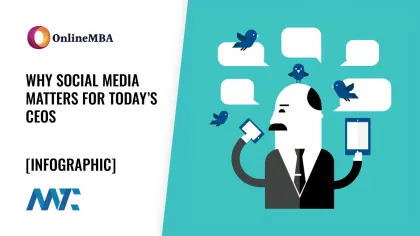
Leadership is no longer confined to boardrooms and press releases. Social media has become the public stage where reputations, trust, and influence are built in real-time. Every day, more than 340 million tweets circulate through digital channels, and consumers increasingly prefer to interact with brands online rather than through traditional customer service.
This shift has profound implications for company leadership. The CEO’s voice has become a vital part of a brand’s identity. When executives engage online—sharing insights, acknowledging feedback, and participating in conversations—they humanize their organizations and strengthen trust with both external and internal audiences.
The Disconnect Between Leadership and Visibility
Despite overwhelming evidence that social media engagement benefits both brand and leadership perception, most executives still hesitate to participate. Only 40 percent of CEOs appear in company videos, half maintain a personal bio on their corporate website, and just one in eight has an active social media profile.
This lack of digital visibility creates a gap between brands and their audiences. Today’s consumers expect transparency and authenticity; when they don’t see it from the top, the entire organization risks appearing impersonal or disconnected. A socially active CEO, on the other hand, signals openness, accountability, and confidence—qualities that foster loyalty and engagement across every stakeholder group.
Private Companies Are Leading the Way
Private company CEOs tend to be far more engaged online than their public counterparts. Leaders of Inc. 500 companies, for example, are 2.3 times more likely to use X, 5.3 times more likely to maintain a Facebook presence, and 8 times more likely to blog. Freed from the strict compliance concerns of public corporations, they can communicate more freely and personally with their audiences.
This accessibility pays off. Socially engaged leaders drive stronger brand affinity, attract better-qualified leads, and encourage richer customer interactions. They also cultivate workplace cultures that prize openness and innovation—qualities that translate directly into higher performance and resilience.
The Rise of the Social CEO
In 2010, only 36 percent of Fortune 500 executives had social media accounts. By 2012, that number had nearly doubled to 66 percent. The trend reflects a larger truth: leaders who embrace visibility outperform those who remain anonymous. A CEO’s online presence helps shape company culture, defines brand personality, and strengthens stakeholder trust.
More than 40 percent of a company’s reputation is tied directly to perceptions of its CEO. Eight in ten consumers say they trust brands more when their leaders are active online. Within organizations, the sentiment is even stronger: 72 percent of employees want their CEO to engage on social media, 81 percent believe it makes them better leaders, and 93 percent say that social CEOs handle crises more effectively.
The takeaway is clear: a CEO’s digital voice isn’t just a marketing tool—it’s a leadership asset. By engaging with the world beyond the executive suite, leaders can demonstrate authenticity, empathy, and authority in ways that resonate across every audience.
The Business Case for Social Leadership
When executives share their vision, insights, and values online, they provide customers and employees with a powerful connection—a human story behind the brand. A social CEO doesn’t need to post constantly or chase trends. Even a modest presence—such as occasional updates, thoughtful comments, or behind-the-scenes perspectives—can go a long way toward shaping perception and trust.
The impact is measurable: social engagement enhances public reputation, boosts morale within the company, and establishes a faster, more credible channel for communication during times of crisis. Leaders who use these platforms strategically elevate both their personal brand and their organization’s standing in the marketplace.
Takeaways
- Social presence builds trust: Executives who communicate openly on digital platforms earn greater credibility with customers and investors.
- Authenticity drives loyalty: Genuine, personal engagement creates lasting emotional connections with audiences.
- Internal culture improves: Employees view social leaders as approachable and transparent, leading to enhanced morale and alignment.
- Crisis management strengthens: A social CEO can respond directly and credibly in real time, minimizing reputational damage.
- Visibility defines leadership: A consistent online presence signals innovation, accessibility, and forward-thinking leadership.
For executives still hesitant to leap, now is the time. Visibility and authenticity are no longer optional—they are the foundation of modern leadership. The insights and statistics shared here are drawn from this infographic that underscores how a connected leader can transform both their reputation and results.